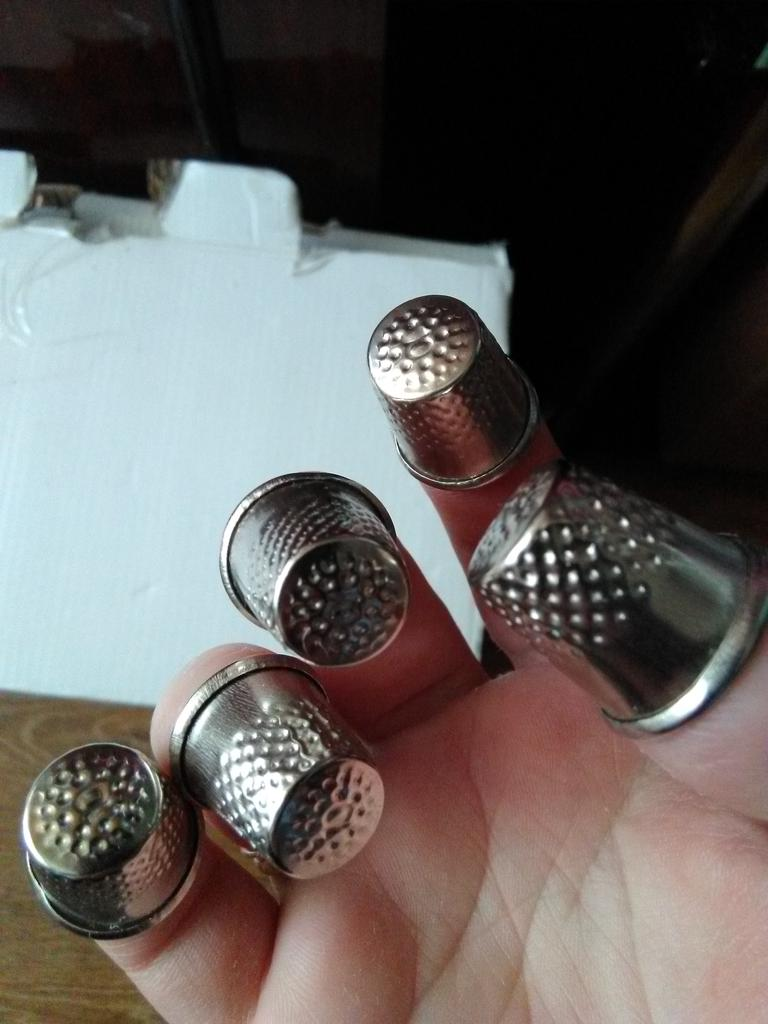Thimbles, those small yet indispensable tools, have a rich and captivating history that stretches across centuries. Originally designed to protect fingers during sewing, thimbles have transcended their practical beginnings to become cultural artifacts, symbols of status, and even collectors’ treasures. Let’s dive into their remarkable journey and uncover how these humble tools became icons of craftsmanship and creativity.
From Ancient Beginnings to Timeless Tools

The story of the thimble begins in ancient times. Archaeologists have discovered the earliest known thimbles in Pompeii, dating back to the 1st century AD. These bronze thimbles were simple yet effective, marking the start of a tool that would stand the test of time. They were crafted to protect fingers during sewing—a vital skill in a world where clothing was hand-stitched.
As time passed, thimbles began to evolve, not only in functionality but also in significance. What started as a practical tool eventually became a reflection of human ingenuity and artistic expression.
Evolving Materials and Designs
Throughout history, thimbles have undergone numerous transformations in both materials and designs. In medieval times, craftsmen experimented with materials like leather, wood, and bronze to create durable yet functional thimbles. By the 14th century, Nuremberg, Germany, became a prominent hub for brass thimble production, setting new standards in craftsmanship.
The 17th century brought a wave of innovation. Wealthy individuals began commissioning thimbles made from luxurious materials such as silver and gold. These ornate thimbles were often engraved with intricate patterns and served as symbols of prestige and social status. Thimbles were no longer just tools—they were jewelry-like accessories that reflected wealth and refinement.
Thimbles in Different Trades and Cultures
While thimbles are most commonly associated with sewing, their utility extended to various trades and cultures. Artisans in crafts like bookbinding, leatherworking, and lace-making relied on thimbles to protect their fingers and enhance precision. These versatile tools became indispensable across multiple industries.
Thimbles also found their way into folklore and popular culture. In the beloved story of Peter Pan, a thimble symbolized a kiss, adding a whimsical layer of meaning to this tiny tool. Even the iconic board game Monopoly featured a thimble as one of its original game pieces, reflecting its ubiquitous presence in early 20th-century households.
Treasured Artifacts for Collectors and Enthusiasts

Today, vintage thimbles are highly sought after by collectors and enthusiasts. Their historical significance, diverse designs, and intricate craftsmanship make them prized possessions. Collectors often specialize in thimbles from specific periods or those made from unique materials such as porcelain, bone china, or sterling silver.
Thimbles have also earned their place in museums and exhibitions around the world. The Fingerhut Museum in Creglingen, Germany, is dedicated to showcasing thousands of thimbles from different eras and regions. These exhibitions celebrate the legacy of thimbles and their role in cultural heritage.
The Thimble in Modern Times
Even in today’s fast-paced world, thimbles continue to hold a special place in the hearts of artisans and crafters. Modern thimble makers often blend traditional techniques with contemporary designs, creating pieces that honor the past while appealing to today’s aesthetic sensibilities. Thimbles are no longer just tools—they are works of art that reflect a deep appreciation for history and craftsmanship.
Symbolism and Sentimental Value

Beyond their practical use, thimbles carry sentimental and symbolic value. They represent the care and dedication that go into handmade creations. For many, a thimble passed down through generations is a cherished heirloom that tells stories of family traditions and artistic pursuits. This emotional connection makes thimbles more than just objects—they are tokens of memory and legacy.
Why Thimbles Continue to Captivate
What makes thimbles so enduringly fascinating? Perhaps it’s their ability to adapt and evolve while maintaining their core purpose. Thimbles remind us of the ingenuity and creativity of past generations, who turned a simple tool into something extraordinary. They are a testament to the beauty of craftsmanship and the importance of preserving our cultural heritage.
Conclusion: A Legacy Stitched in Time

Thimbles are far more than functional sewing tools—they are artifacts that highlight humanity’s ability to combine practicality with artistry. From their ancient beginnings in Pompeii to their role as collectors’ treasures, thimbles have journeyed through history as symbols of creativity, status, and cultural significance. Whether they’re made of gold, porcelain, or brass, each thimble tells a story, connecting us to a rich legacy of craftsmanship and innovation.
As we marvel at the enduring appeal of thimbles, it’s clear that these tiny tools hold a big place in the tapestry of history. Whether you’re a collector, a crafter, or simply someone who appreciates the beauty of small things, thimbles are a timeless reminder of how even the humblest objects can leave a lasting impact.


